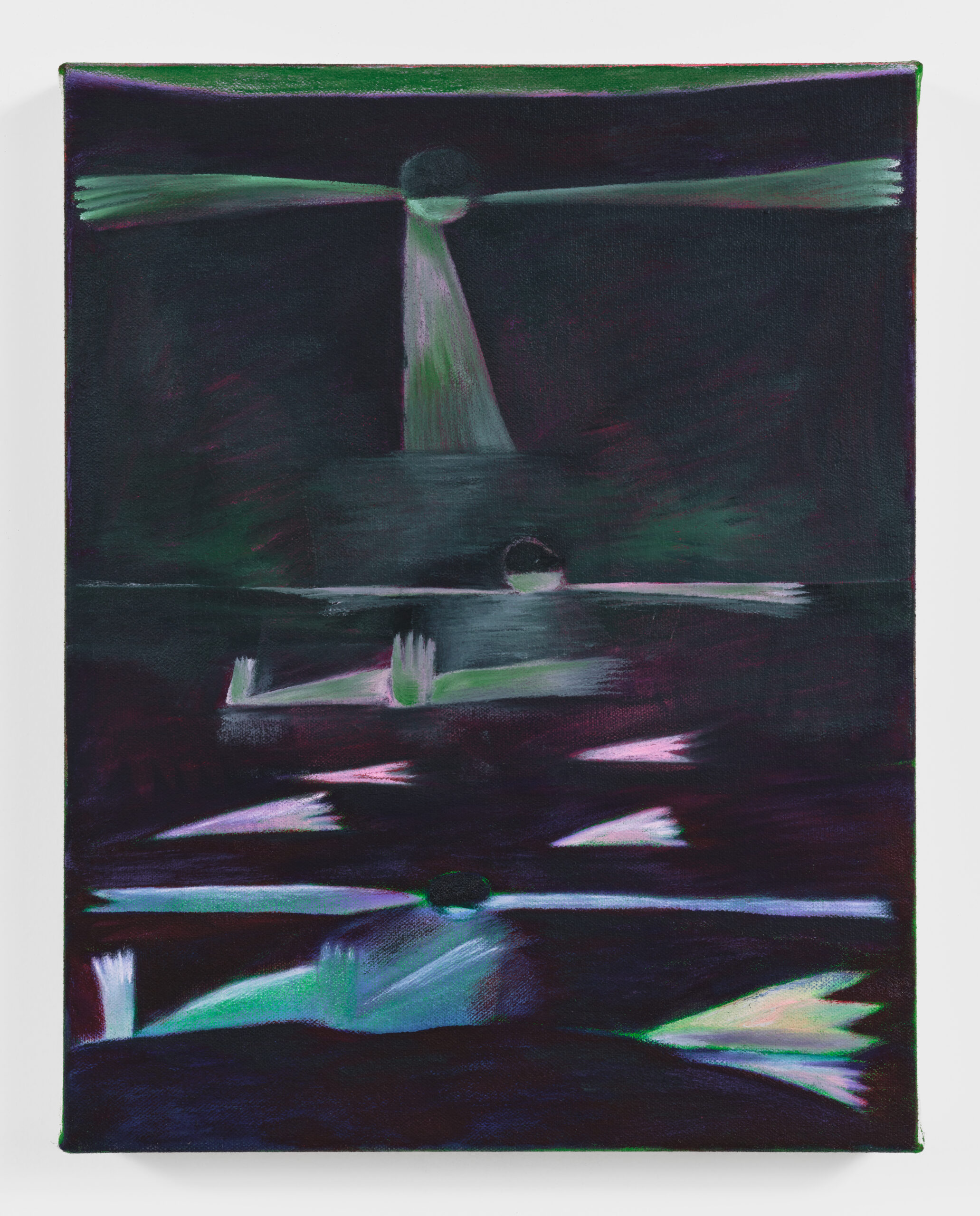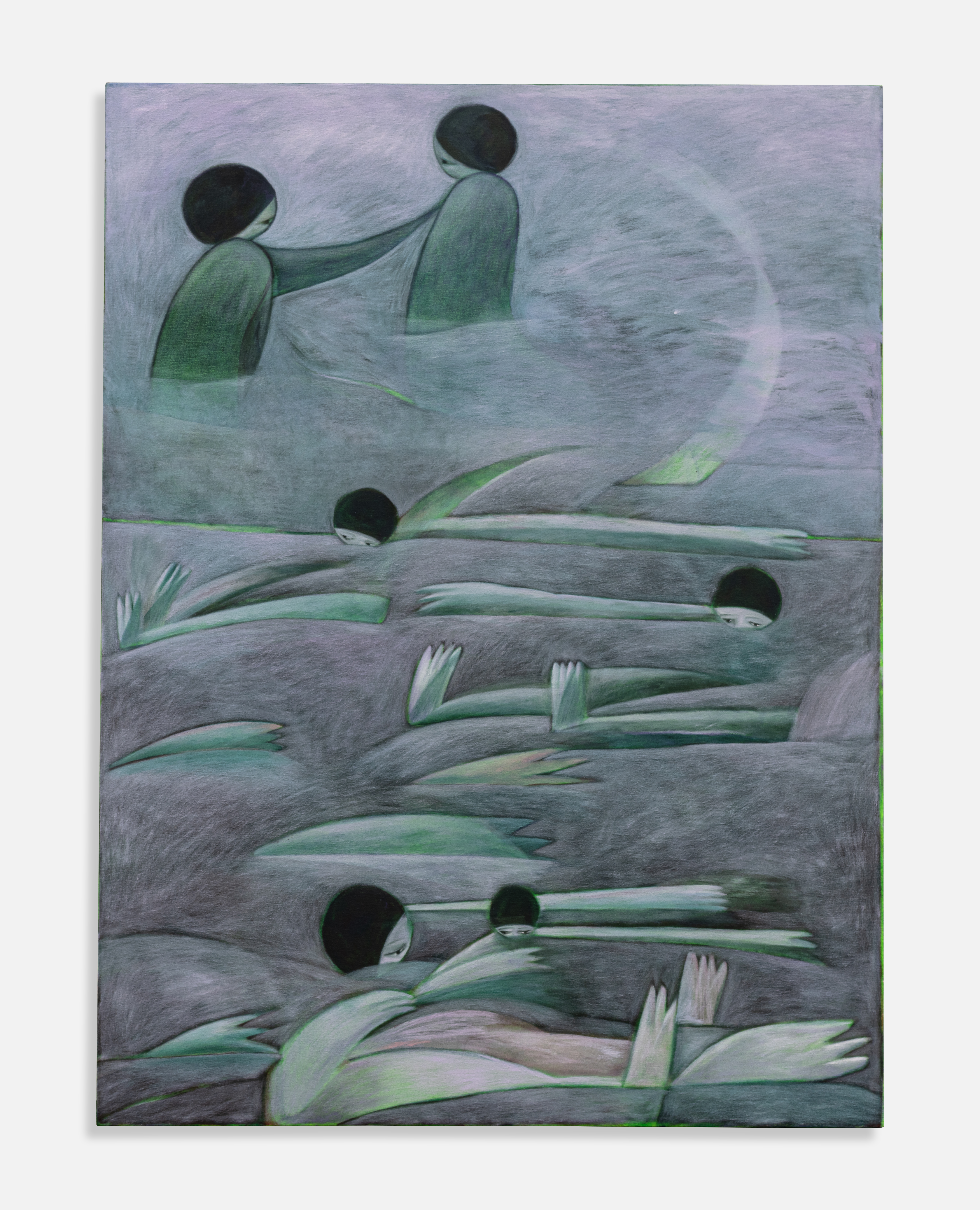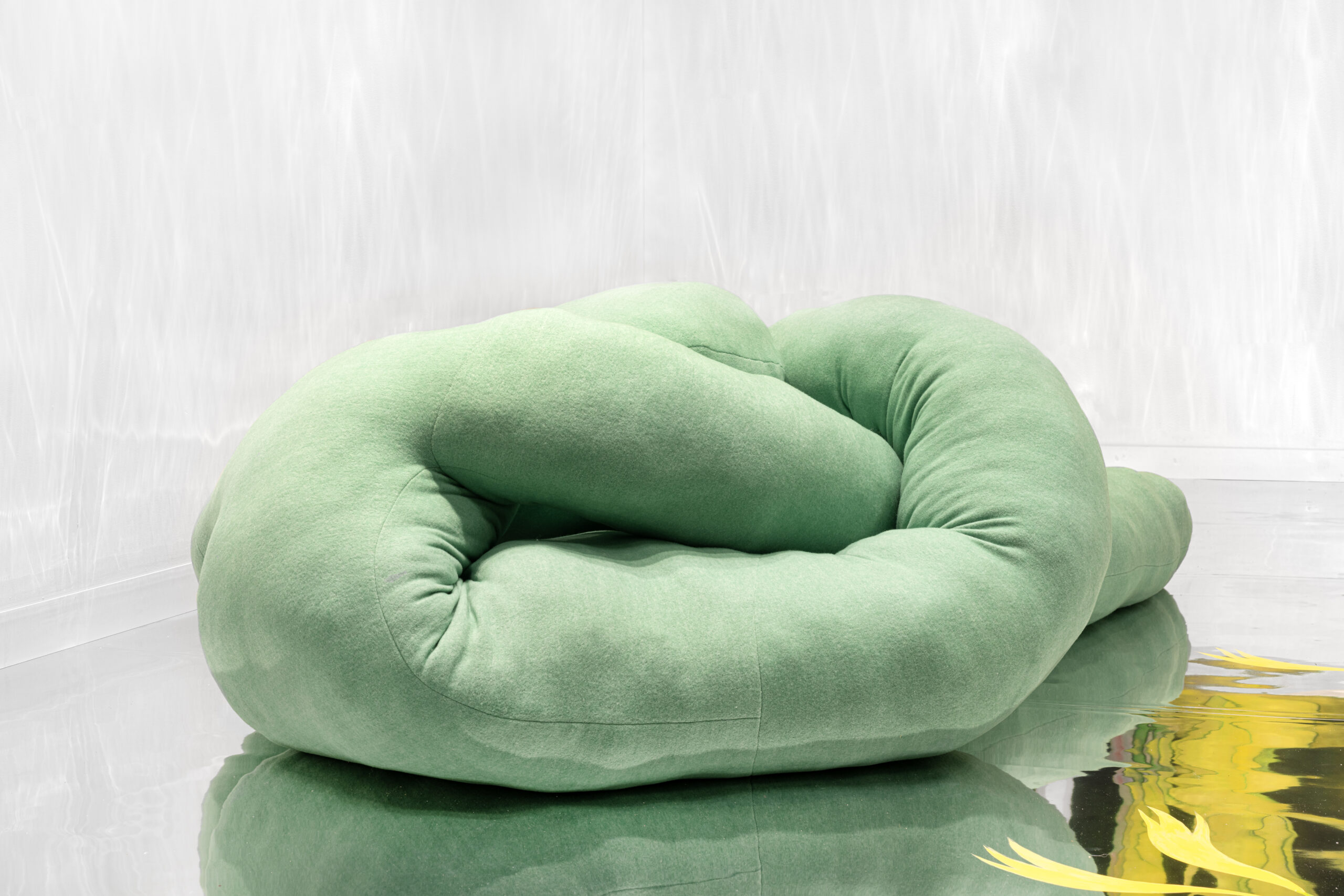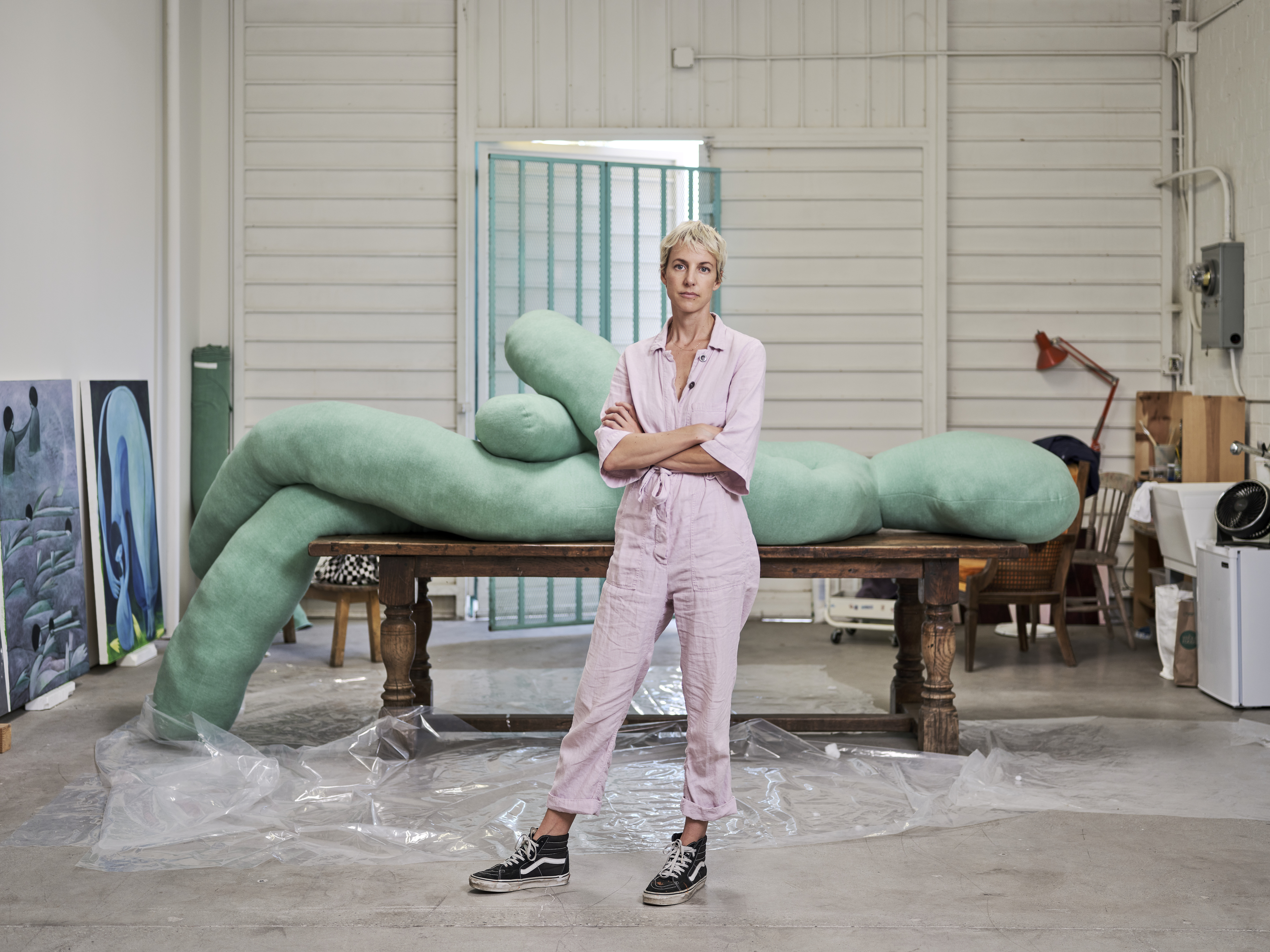Tahnee Lonsdale Exclusive Article
By Sarah-Eve Leduc, as seen in our April 2024 Print issue
Tahnee, an artist whose roots trace back to Sussex, has charted a course that led her to the heart of Los Angeles’ eclectic art scene, marking a significant evolution in her artistic expression. From the confines of a cramped London loft to the expansive landscapes of L.A., Tahnee’s work traverses a broad spectrum, encompassing large-scale paintings, captivating soft sculptures, and intricate works on paper.
Tahnee’s artwork is voicing to the transformative power of place and personal experience in shaping an artist’s work. Her journey is one of adaptation and exploration, reflecting a vibrant interplay between her surroundings and her creative process. This dialogue with her environment has led her to push the boundaries of traditional painting and sculpture, venturing into the realms of the metaphysical and the mystical. We had the opportunity to interview her exclusively at Flanelle.


Tahnee, thank you for taking the time to discuss with us. Your journey from Sussex to the vibrant art scene of Los Angeles seems to have played a pivotal role in the evolution of your artistic practice, from large-scale paintings to engaging soft sculptures and works on paper. Can you share how your personal journey has influenced your creative process?
My personal journey is something that is mapped out within each of my paintings. A sort of emotional landscape of how I was feeling and where I was at the time. I remember when I was living in London with two tiny children, I was painting out of my loft, which was small and cramped. There was no separation between me, my kids and my work so unsurprisingly, I was painting cramped and claustrophobic domestic scenes, where the furniture and characters were stacked on top of each another. When I finally escaped the loft and found a space outside the home, I began painting these magical landscapes that were lush and colorful. My escape plan had worked and I was finally free! Well, for a few hours at least. When we moved to Los Angeles things initially became expansive and abstract as I felt the vastness of this place, but then things quickly became strained and tight and life became difficult. Not to go into every bit of life’s ups and downs, but things got better and freer and then the pandemic hit and something magical happened. I’ll leave it at that.
Since relocating to Los Angeles, how has the city’s cultural diversity and artistic dynamism influenced the evolution of your work? Are there elements of LA’s art scene that have particularly resonated with you or challenged your artistic practices?
L.A’s art scene is incredibly inclusive. This felt freeing compared to London’s hierarchical systems. It’s also very quiet here. You go into your little patch of space and you work. Sometimes it feels like I’m in a vacuum. I’m not sure if that’s good or not, but it’s something. And I think that vacuum can’t help but create something different from everyone else.
Can you share a pivotal moment in your career that significantly influenced your artistic direction and led you to explore the themes of metaphysical presence and ancestral guidance in your work?
Breakups. I know it sounds like a cliché, but there is nothing quite like heartbreak and sorrow to really drive you forward. That combined with a pandemic, who wouldn’t seek out God?! I would have accepted help from the lowliest of angels.

Your work uniquely bridges painting and soft sculpture. Could you discuss the connection between these mediums in your artistic practice and how they complement the themes of your current exhibition?
They are actually quite separate, and provide such different experiences. Sculpture has been something I have been curious about for a while, but I found it intimidating as I didn’t have any experience with the traditional materials. I attempted to use wire and it was awful. Fabric was something I could do at home, but mistakes kind of added to the weirdness of it. It wasn’t until a few years later that they became these massive oaf-like creatures. So different from the elegant and regal figures in my paintings. Body and soul, separated.
You’ve mentioned collaborating with costume designers in L.A. to create your soft sculptures. How does this collaboration process influence the outcome of these pieces, and what does it bring to your artistic expression?
My designs are pretty vague and simple. So, there is a lot of room for collaborative gaps in translation. And I am happy for these. The sculptures are a kind of trial and error process. The shape and size are so affected by the type of material I use. Velvet was very rigid and didn’t allow for much expansion, but my most recent green terry fleece was wild. He ballooned to a massive 16ft and could have gone much larger. We kept stuffing him more and more, and he just grew and grew to accommodate. And soooooo soft, like a giant cloud baby!
Could you walk us through your creative process from concept to completion, especially focusing on how you choose your color palette and explore the moods in your paintings?
I use a sketch book all the time. Sometimes my drawings are intentional, and sometimes they are automatic. The most resonant sketches make it to the canvas.
For my canvas, I always paint a color as my base, and recently I have layered a few more colors over this first one. From here I draw with my brush the outline of either a drawing from my sketchbook, or something from my head. I then work into this, sometimes rubbing out, and sometimes layering. There is a frequent back and forth, rubbing out and applying, carving out an image from thin air. But they are always the same, my figures. They always appear no matter what. Sometimes a lot of digging is needed, and sometimes hardly any at all.
You explore themes of tribes, sisterhood, and mysticism in your work. Are there any specific cultural or historical references that inspire these themes, and how do you weave these influences into your art?
Not particularly. I rarely look at reference images or texts for inspiration. Upon reflection it’s possible to see references here and there, but always in hindsight, or halfway through making a work. I was recently confronted with a memory of The Abyss whilst creating work for the Armory last year, and with that I often push this reference. I’ve had to come to terms with the fact that my work isn’t very intellectual. It doesn’t come from knowledge, it comes from not knowing.
What have been some of the most challenging aspects of preparing for your first European solo show, and conversely, what have you found most rewarding?
Preparation for every show is the same. It doesn’t matter where it is. I don’t create work for a show necessarily, I just create the work. And some of it goes into the show and some doesn’t. I do find that it helps to have a gap in between a show and making work again. Like coming up for air and looking into the far distance, otherwise you are holding your breath and have your eyes shut, making and making, between your head, hand and the canvas. It’s thrilling, but it’s not sustainable
Looking ahead, how do you see your work evolving? Are there new themes or mediums you’re interested in exploring?
The themes come on their own, but I have some say over how I apply the paint. This is probably where you’ll see the evolution. I recently participated in a ceramics residency, and having never worked with clay I was surprised how little control I had over the medium. It was like a wayward kid, pushing and pushing, whilst I kept pulling and pulling. It was fun to relinquish control so I decided to practice some of the same surrender in the studio with my paintings and that’s lead to a very hazy, borderless expression. It’s a little uncomfortable to be making them this way but this is the way it seems to be going. So, I’m going see what comes of it.

